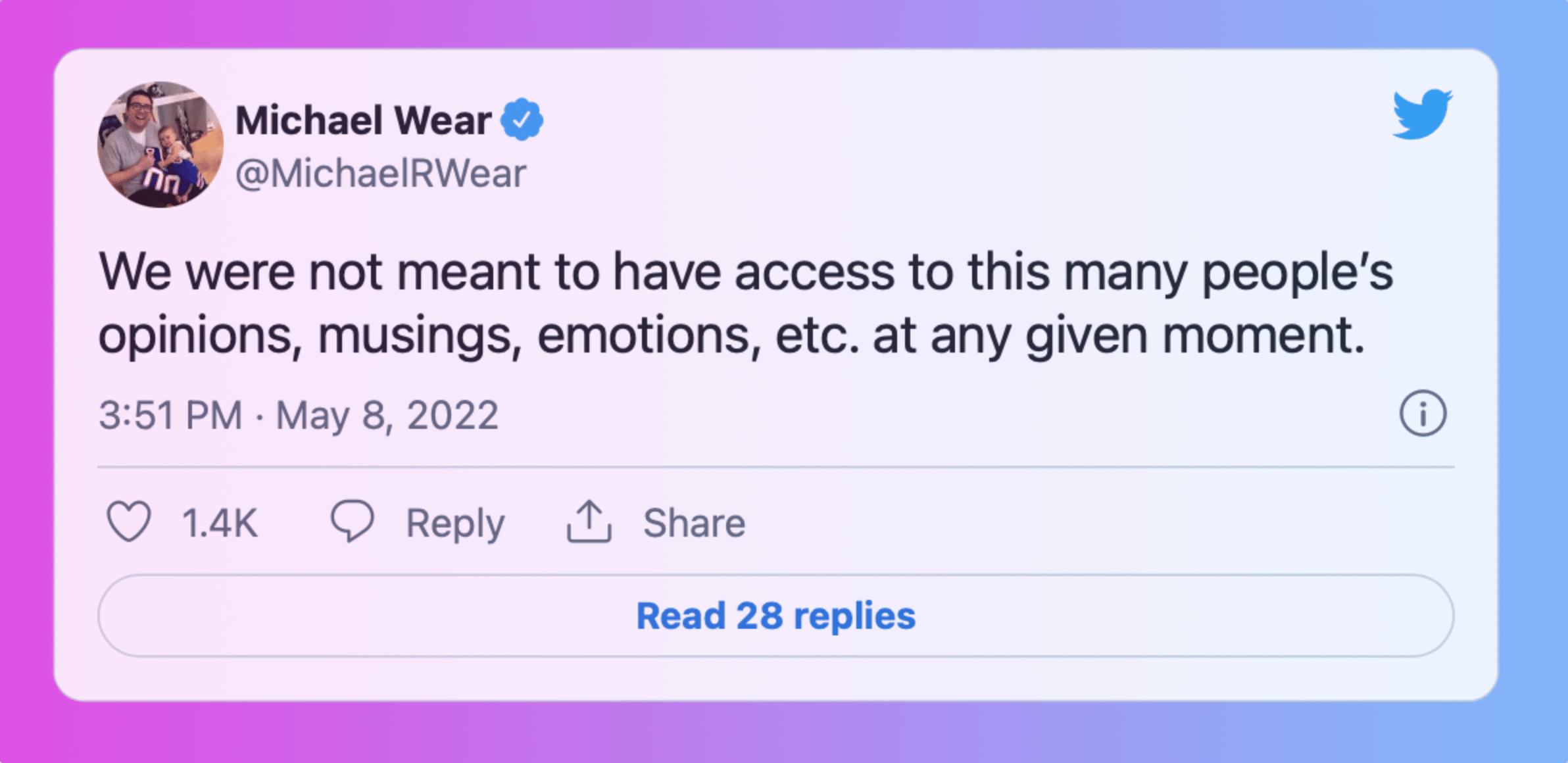Less Is More
The online discourse has made it difficult to keep up a digest style newsletter. It's time to shift course.

I have decided I need to introduce some changes to how I post online. I typically write a lot of link posts because I read quite a bit online and want to share things that I think are interesting. This comes from a desire to add my thoughts to what is put out there by others, and — let’s face it — comment sections are a pretty bad way to do it. Lately, though, a lot of what I see online has to do with the outrage of the week. “Outrage of the week” sounds like some cute embellishment, but it has become literally accurate. Every week, the people on the internet collectively lose their minds about a particular subject. Then, everyone gives a hot take on that subject. When the next week hits, there’s a new subject to write about. It has become an all-too-familiar standard pattern.
I’m not saying that these subjects aren’t truly outrageous (the war in Ukraine being a particularly potent example). With so many people writing about the same thing, though, adding another voice to the chorus doesn’t always feel appropriate or effective. Former religion advisor to President Obama, Micheal Wear, recently tweeted about this.

I want to continue to read about these issues, I’m just not sure that I wish to write about them. Even in the vastness of the World Wide Web, escaping “the outrage” and reading and writing about something different can be difficult. So, I’m going to slow down on link posting in the way that I have been doing it. I’ll still be blogging. I just don’t want to commit to a weekly email, in case, on any given week, I just can’t find enough that I want to write about. At least not enough to write about without getting sucked into the outrage.
Luke Harrington writes about how the outrage of the week drove him off social media. He understood that there were good people on either side of the issue.
I knew, though, that social media would not show me evidence of this. I knew the moment I opened Facebook or Twitter, I would be assaulted by a bottomless column of self-righteous gloating from one side and self-righteous screeching from the other. That I’d be forced to re-read the exact same shouting matches I’d seen rehearsed ad nauseam for decades. That panicky, breathless misinformation would spread like chlamydia, and the most ignorant, unthinking voices would be amplified to deafening levels.
A news story, told by a mob of idiots, full of sound and fury, signifying nothing.
It's hard to write about what's going on in the world when social media is bringing us down to the lowest common denominator. Even long-time blogger Jason Kottke is taking a sabbatical from his general purpose blog.
Does what I do here make a difference in other people’s lives? In my life? Is this still scratching the creative itch that it used to? And if not, what needs to change? Where does kottke.org end and Jason begin? Who am I without my work? Is the validation I get from the site healthy? Is having to be active on social media healthy? Is having to read the horrible news every day healthy? What else could I be doing here? What could I be doing somewhere else? What good is a blog without a thriving community of other blogs? I’ve tried thinking about these and many other questions while continuing my work here, but I haven’t made much progress; I need time away to gain perspective.
It will be interesting to see if Jason comes back, or if he decides that having to follow what is going on around the internet is too mentally taxing and not worth the effort and the return.
Similarly, I won't be doing "Week on the Web" digests for the foreseeable future. I would rather not have to be tethered too tightly to what is going on in the web version of purgatory. I'm not some alchemist who can turn the lead of internet sentiment into the gold of something edifying. When I was using HEY World, I was writing longer posts and sending them out through email, RSS and the open web. That process didn’t require that I follow current events so closely.
HEY World
Using HEY World by 37signals worked pretty well for general purpose ad hoc blogging, but it is a very limited tool. That's mostly a feature, not a bug, but in some cases, it can be frustrating. For example, when HEY added scheduling for emails, they left it half-baked into their implementation of HEY World. You get an error, though, when you try to use it. I messaged their support folks about it, and it sounds like they have no plans to fix the bug. I find that strange, since the whole point of HEY World is that it makes blogging as easy as sending email. You would think they would want to keep the email features, like scheduling — that make sense for blogging — intact for HEY World.
There are other, more important ways, that HEY World feels like an experiment that 37signals is not pursuing further. For instance, when you export your data out of HEY, you only get your standard emails, and not the ones that have been sent to the web. This means that any blog posts you write in HEY are stuck there and disappear when you leave the service. If you spend time on your writing, and attach some value to it, that should be a deal-breaker. It certainly is for me. So, I won't be using HEY World for blogging anymore, unless I can find a good way to back up my work. Given my picky nature about blogging and the fact that HEY is lacking in customization or the ability to use your own domain, it was always a long shot that it would stick, anyway.
Newsletters
Something that HEY World gets absolutely right is the ability to post across delivery mechanisms and have it look virtually the same on every client. However, I don't need HEY to do that. Both Micro.blog and Ghost do something similar, just a bit differently. For the purposes of this post, I will stick with describing Micro.blog, since that is currently my blogging platform of choice.
Micro.blog gives you three options for how to implement newsletters, and I think they are all well-designed for different use cases.
- Send email for each long blog post with a title
- Collect all short microblog posts and long posts into a weekly email
- Collect posts from a category into a monthly email
I have been using the second option to produce an email digest each week, for folks who may not be following my blog via RSS. I'm going to switch to sending out long posts via email, like I was doing with HEY World. This means I can take the time to write longer posts with greater thought put into them. I won't feel as if I need to fill the week with link posts while dodging the outrage.
Moving forward
I love writing out my feelings. It's cathartic, therapeutic and most of all, fun. I want to continue to do so, but I need to focus more on less. This was the idea I had when I briefly shifted to HEY World, but there's no reason I can't do it on Micro.blog. That platform allows me to post whatever I want and distribute that content in the ways that make the most sense.
Treasure Hoard
Join the newsletter to receive posts in your inbox.


